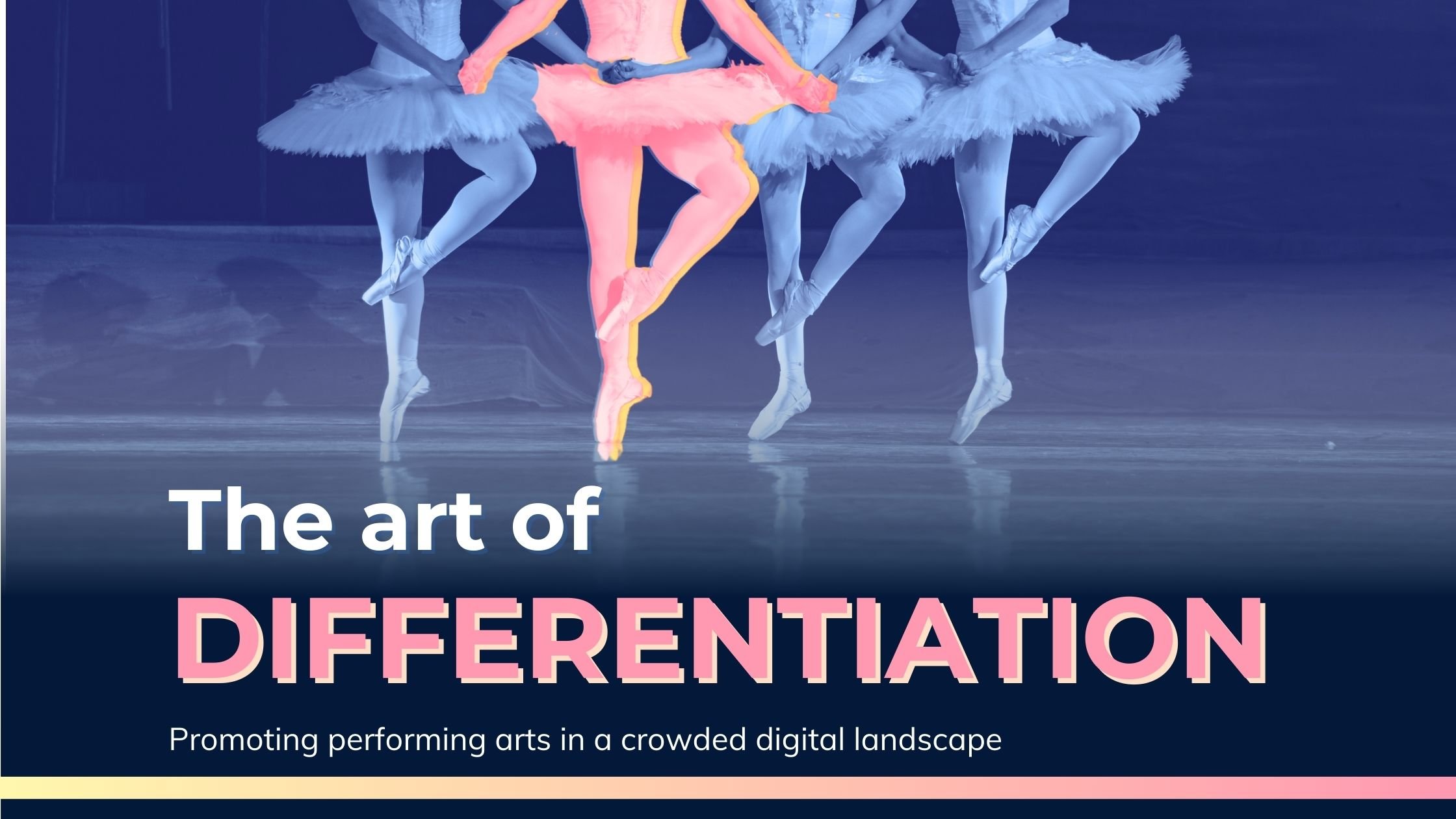Standing Out in the Digital Age: How Performing Arts Organizations Can Differentiate Themselves
In today's dynamic digital landscape, standing out amidst the sea of marketing messages is a paramount challenge for performing arts organizations. With consumers bombarded by a constant influx of content, differentiation through a unique brand voice, captivating visual identity, and compelling content strategy is essential to capturing and retaining audience attention.
Developing a Unique Brand Voice
Crafting a distinct brand voice begins with a deep understanding of your organization's essence. Define your core values and mission—whether it's conveying the elegance of classical performances or the vibrant energy of contemporary arts. For example, if your brand aims to connect with younger audiences attending Broadway shows, consider a playful and engaging tone that resonates through witty social media posts and lively email newsletters.
Create a comprehensive brand style guide outlining preferred language, tone, and humor across all communication channels to ensure consistency. Train your team to embody this voice in every interaction, fostering a unified and authentic brand experience.
Crafting a Memorable Visual Identity
Your visual identity serves as the cornerstone of brand recognition and perception. Design a logo that not only symbolizes your organization but also evokes emotions aligned with your artistic offerings. For instance, a theater company specializing in avant-garde productions might opt for a bold, abstract logo design that intrigues and captivates viewers.
Ensure your logo is versatile and scalable, maintaining clarity and impact across various platforms and sizes. Develop a cohesive visual language by selecting a distinct color palette and typography that reflects your brand's personality. Integrate these elements consistently across promotional materials, website design, and digital advertisements to reinforce brand identity and foster visual memorability.
Content Strategies that Differentiate
Effective content strategies are rooted in audience understanding and storytelling prowess. Conduct thorough market research to uncover audience preferences, interests, and pain points. Develop detailed buyer personas to tailor content that addresses specific audience needs. For example, a ballet company could create compelling blog posts that delve into the behind-the-scenes process of choreographing a new production, offering a glimpse into the creative journey.
Utilize storytelling techniques to convey your organization's narrative, values, and impact. Showcase real-life success stories and testimonials from performers and patrons to build credibility and emotional connection with your audience. Blend informative content with entertainment value, such as video highlights of memorable performances or interactive virtual tours of your venue, to engage and inspire your audience.
Embracing Unique Characteristics
Embrace your organization's unique characteristics and quirks to distinguish yourself in the competitive landscape. Infuse humor and wit into your marketing efforts to showcase the personality behind your brand. For example, a comedy troupe could create humorous skits or memes that playfully promote upcoming shows on social media platforms.
Highlight your commitment to community and artistic integrity by sharing stories of collaborations with local artists or community outreach initiatives. Embrace transparency and authenticity by addressing challenges or setbacks openly, demonstrating resilience and humanity. Innovate by exploring emerging technologies such as virtual reality experiences or interactive live stream performances to engage audiences in new and immersive ways.
Building Lasting Relationships
Nurture meaningful connections with your audience through proactive engagement and personalized communication. Respond promptly to audience feedback and inquiries across social media channels, demonstrating attentiveness and appreciation for their support. Foster a sense of community by inviting audience participation through contests, polls, and exclusive behind-the-scenes content.
For instance, host virtual Q&A sessions with artists or conduct live-streamed rehearsals to offer audiences an insider's perspective. Cultivate brand advocates by acknowledging and celebrating patron loyalty through special offers, loyalty programs, or VIP experiences. You can foster enduring audience loyalty and advocacy by cultivating strong relationships based on trust and shared passion for the arts.
Conclusion
Differentiation through a compelling brand voice, distinctive visual identity, and engaging content strategy is pivotal for performing arts organizations seeking to thrive in the digital age. By authentically expressing your organization's values, connecting emotionally with audiences through compelling storytelling, and embracing innovative approaches, you can elevate your brand presence, foster lasting relationships, and drive sustained engagement and growth in today's competitive digital landscape.

